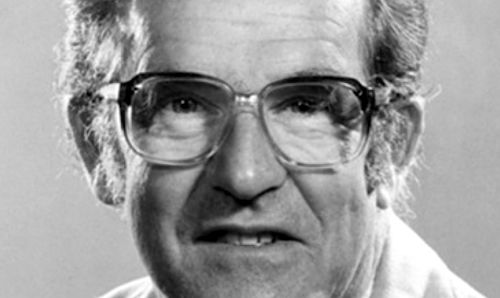John Nye was born in Hove, Sussex. He was a student in Cambridge and carried our postdoctoral research at Bell Laboratories in the USA. In 1953, he moved to the University of Bristol, where he was a member of the physics department, while employed and after formal retirement, for 66 years.
He made major achievements to physics in three areas: crystals, ice and light. In crystals, his emphasis was on the defects that disrupt the regular arrangement of their atoms; in the spirit of our colleague Charles Frank: “Crystals are like people: it is their imperfections that make them interesting.” His first contribution to science, in 1947, was a collaboration with the Nobel Prize Winner Sir Lawrence Bragg. Collectively they explored crystal defects with an analogue experiment, in which the atoms in a crystal were represented by a raft of bubbles. He was among the first to realise that for some purposes a crystal can be regarded as a gas of continuously distributed defects. This phase of his research culminated in his 1957 book Physical Properties of Crystals; this is still in print and remains a uniquely accessible treatment of a difficult subject.
In ice, he studied glaciers: how they flow over the irregular rock beneath them, how they surge and how they crack. He became a world-leading glaciologist, serving as President of the International Glaciological Society and receiving the prestigious Seligman Crystal (“awarded from time to time to one who has made an outstanding scientific contribution to glaciology so that the subject is now enriched”). This research was not only theoretical. He was a valued team member on field trips and expeditions to the Alps, the Pacific Northwest, and the South Pole.
In light, he made seminal contributions on several levels. When a field of light is represented by a family of rays, complicated focal surfaces (‘caustics’) can form under ‘natural’ conditions where there is no symmetry. A familiar example is the pattern of dancing lines of refracted sunlight on the bottom of a swimming pool, where the caustic surfaces intersect the bottom. He played a major part in the reinvigoration, in Bristol, of this ancient branch of optics: understanding not only the geometry of caustics but also the delicate interference detail that decorates them. On the finest scale, his attempts to understand how radio waves are reflected from the rock beds beneath glaciers led to the discovery of a fundamental feature of waves of all kinds: ‘wave dislocations’, analogous to defects in crystals. His joint paper reporting this has been cited more than 2,000 times. Finally, he exposed the fine details of the geometry of the electric and magnetic fields comprising light, in the form of lines on which the polarisation is purely linear or purely circular. This optics research culminated in his totally original treatise: Natural focusing and fine structure of light.
His insights penetrated to the heart of every subject he focused his attention on. His style reflected – more correctly, did much to establish – the distinctive Bristol approach to physics: geometrical and pictorial, with mathematics as the servant rather than the master. His scientific papers, and his books, stand as works of literature as well as science: masterpieces of clarity, concise, elegant.
His service to the University of Bristol was exemplary. He always had time for students who wanted to see him, and his lectures were models of meticulous planning and clear explanation. As a research supervisor he was patient and chose the balance between being hands-on (directing research day-to-day), and hands-off (allowing for students’ creativity), with sensitivity, according to the needs and talents of each.
Those of us who worked closely with him appreciated his decency and his scientific generosity; he was the epitome of the English scientific gentleman. His intellectual determination was perfectly balanced by his unfailing politeness; in more than half a century, we never saw him angry.
His engagement with science continued at full strength into his final years. Physically too frail to come to the University, he worked at home from morning till night: writing several papers every year, and in his nineties mastering the technicalities of mathematical software and scientific computer graphics. He never lost his intense curiosity. In the days before he died, he emailed about the Christmas lights in his home, puzzling about how the sharp-pointed stars that appear to radiate from them reveal limitations of our vision, and – in a typical flight of association – he wondered why the stars on national flags look very different: their points are all blunt, not sharp.
He is greatly missed: by his students and colleagues in the School of Physics, in the wider University, and by his wife Georgiana and their three children Stephen, Hilary and Carolyn.
